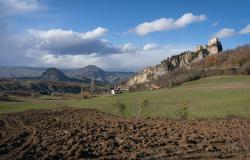Italian scientists continue to make wide use of animals in experiments, despite European Union efforts to reduce the practice, the country's anti-vivisection group LAV has reported.
LAV pointed to recent figures published by the Welfare Ministry showing that 2.7 million animals were used for scientific or experimental purposes in Italy during the three-year period 2004-2006.
This was an annual average of 911,962 per year, a slight increase on the average for the previous three-year period of 2001-2003, which worked out at 911,680.
But LAV said the latest figure was misleading as it did not include invertebrates or animal fetuses.
The group said there had been a particularly alarming rise in the number of experiments involving horses, cows, fish and birds.
''What predictive information can humankind possibly gain from tests on horses, birds and fish, which are genetically entirely different from us?'' asked biologist Michela Juan, a LAV spokesperson.
The species most experimented on continue to be mice (around 1.7 million in 2004-6) and rats (820,000), followed by other rodents (7,100) and rabbits (32,300).
According to LAV, these animals are not selected because of scientific reasons but because they are cheap to acquire and maintain.
The organization said the continued use of animal testing was particularly disturbing in view of the EU's ongoing commitment to reducing animal testing as much as possible.
The EU first started considering ways to protect animal welfare in science in the mid-1980s and since then has introduced various measures, including a ban on testing for cosmetic purposes and strict rules governing the general treatment of animals used in experiments.
Last September a majority of deputies in the European Parliament supported a declaration in favour of completely phasing out testing on primates, although this may not become law.
Around 10 million animals are used for research and experiments in the EU each year. Around a quarter of these are for required testing, such as for food and medicine safety.















